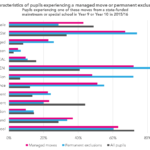A managed move is an approach to transfering your child between schools. The goal is to give them a fresh start at their new institution.
A managed move should only be considered when it is in your child’s best interests and agreed upon between both schools. According to law, proper procedures must be adhered to when considering managed moves.
The start date
A managed move is an excellent way to explore alternative school placement options when your child exhibits challenging behavior that all other approaches have failed. Usually this requires cooperation between their current school and a potential new one.
A well-managed move requires carefully planning, execution and communication between schools and key professionals involved. The main focus should be getting your child settled into their new environment.
Your new school should offer something unique in terms of size, location, peer group composition, teaching team or curriculum. Both you and your child should recognize its benefits and commit to supporting its move. The most desirable schools will embrace your child and help them reach their full potential; not only will this facilitate improved learning and development outcomes for everyone involved but it may also reduce risks such as expulsion.
The trial period
A managed move is a voluntary agreement between your child’s school and yourself to change his/her educational program under controlled conditions. Managed moves may serve as an alternative to permanent exclusion and don’t show up as official records on either student record.
However, all parties involved should understand and agree on what will happen if a managed move does not go as planned; should one not succeed, your child may return to their former school.
Trial periods for managed moves typically last 12 weeks with regular reviews (fortnightly). At the end of this trial period, a decision will be made whether the move can become permanent.
Trial periods offer parents and schools alike an ideal opportunity to assess whether your child will adapt well in a new environment, or whether the transition needs further attention. At the receiving school, this time can also serve as an opportunity for any issues that need addressing as well as discussing potential support needs for making your managed move as smooth and successful as possible.
The end date
A managed move refers to an agreed transfer between schools on an experimental basis. The end date of this trial will depend on several factors, including its quality and the degree of engagement from both sides – the home school and new one.
At the conclusion of your trial, the end is an important milestone that requires coordinated team effort to manage. To ensure a seamless transition, plan it out beforehand with both schools: new should provide guidance about what to expect, duration and who you can contact for support; while your home school should offer advice prior to big day.
An effective managed move may consist of anything from an agreed transition plan to multi-stage processes. As with any change to education, however, reducing anxiety and resistance requires advance planning.
The final review
A managed move is a voluntary agreement among schools, parents, and pupils that can be implemented when there is a serious breach of school behavior policy. Any decision regarding using such measures should be made solely by the head teacher as an extreme last resort and must be lawful, rational, and fair in nature.
Prior to initiating any managed move, an initial trial period should be established and reviewed at regular intervals – fortnightly ideally. A full review must take place 12 weeks after commencement and an important decision about whether the move is permanent should be made at that time.
Sollte the managed move not go as planned, it must be ended as quickly as possible and the pupil returned to their original school. An immediate review meeting should take place between representatives from both schools as well as with both sides, the pupil, their parents/carers and themselves in order to determine a way forward.





